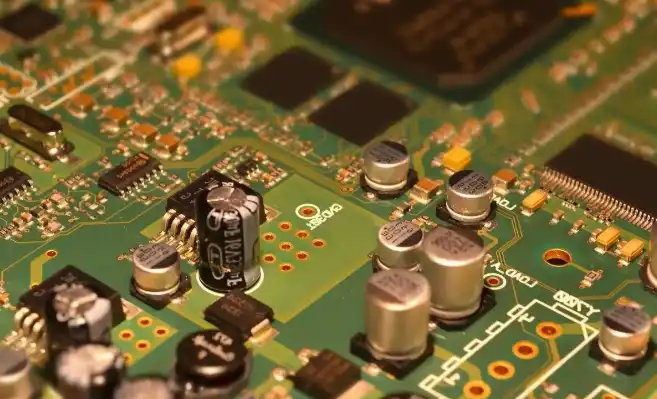Common Components on a PCBA: A Comprehensive Guide
A Printed Circuit Board Assembly (PCBA) is the heart of many electronic devices, including power supply units. Understanding the common components found on a PCBA is crucial for anyone involved in electronics design or manufacturing. This comprehensive guide will explore the essential elements that make up a typical PCBA, with a focus on power supply PCBAs. From resistors and capacitors to integrated circuits and connectors, we'll delve into the functions and importance of each component, providing valuable insights for both beginners and experienced professionals in the field.

Essential Active Components in Power Supply PCBAs
Active components are the driving force behind any electronic circuit, including power supply PCBAs. These components can control the flow of electricity and perform complex functions within the circuit. Let's explore some of the most common active components found in power supply PCBAs:
Integrated Circuits (ICs)
Integrated circuits are the backbone of modern electronics, packing thousands or even millions of transistors into a single chip. In power supply PCBAs, ICs play a crucial role in voltage regulation, current sensing, and overall power management. Some common types of ICs found in power supply designs include:
- Voltage regulators: These ICs maintain a constant output voltage despite fluctuations in input voltage or load current.
- Switching controllers: Used in switch-mode power supplies, these ICs control the switching of power transistors to achieve efficient power conversion.
- Power management ICs (PMICs): These versatile chips often combine multiple power management functions, such as voltage regulation, battery charging, and power sequencing.
Transistors
Transistors are semiconductor devices that can amplify or switch electronic signals. In power supply PCBAs, transistors are often used for switching and voltage regulation. The most common types of transistors found in power supplies include:
- MOSFETs (Metal-Oxide-Semiconductor Field-Effect Transistors): These are widely used in switch-mode power supplies due to their high efficiency and fast switching speeds.
- BJTs (Bipolar Junction Transistors): While less common in modern power supplies, BJTs are still used in some linear regulator designs and for current amplification.
Diodes
Diodes are semiconductor devices that allow current to flow in only one direction. In power supply PCBAs, diodes serve several important functions:
- Rectification: Converting AC to DC by allowing current to flow only in one direction.
- Protection: Preventing reverse current flow and protecting sensitive components from voltage spikes.
- Voltage reference: Some specialized diodes, like Zener diodes, can provide stable voltage references for regulators.
Critical Passive Components in Power Supply PCBAs
While active components provide the main functionality, passive components are equally important in power supply PCBAs. These components don't require an external power source to operate and are essential for filtering, energy storage, and current limiting. Let's examine some key passive components:
Capacitors
Capacitors are energy storage devices that can quickly charge and discharge. In power supply PCBAs, capacitors serve several crucial functions:
- Smoothing: Reducing ripple in rectified DC voltage.
- Filtering: Removing high-frequency noise from power lines.
- Energy storage: Providing short-term energy storage to maintain voltage during load transients.
Common types of capacitors used in power supplies include electrolytic capacitors for high capacitance values and ceramic capacitors for high-frequency filtering.
Inductors
Inductors are coils of wire that store energy in a magnetic field. In power supply PCBAs, inductors play a vital role in:
- Voltage conversion: Used in switch-mode power supplies to store and transfer energy.
- Filtering: Removing high-frequency noise and smoothing current flow.
- EMI suppression: Reducing electromagnetic interference generated by switching circuits.
Resistors
Resistors are components that oppose the flow of electrical current. In power supply PCBAs, resistors serve various purposes:
- Current limiting: Protecting components from excessive current.
- Voltage dividing: Creating specific voltage levels for feedback and control circuits.
- Pull-up/pull-down: Defining logic states in digital circuits.
Specialized Components and Connectors in Power Supply PCBAs
In addition to the core active and passive components, power supply PCBAs often incorporate specialized components and connectors to enhance functionality, safety, and usability:
Transformers
Transformers are essential in many power supply designs, especially those that need to convert between different voltage levels. They provide galvanic isolation between input and output, enhancing safety and reducing noise. In switch-mode power supplies, high-frequency transformers are used to achieve compact and efficient designs.
Fuses and Circuit Breakers
Safety is paramount in power supply design. Fuses and circuit breakers protect against overcurrent conditions, preventing damage to the power supply and connected devices. These components are designed to interrupt the circuit when current exceeds a specified threshold.
Heat Sinks and Thermal Management Components
Power supplies often deal with significant heat generation, especially in high-power applications. Heat sinks, thermal pads, and sometimes even active cooling solutions like fans are incorporated into power supply PCBAs to manage heat and ensure reliable operation.
Input and Output Connectors
Connectors are crucial for interfacing the power supply PCBA with external power sources and loads. Common types of connectors found on power supply PCBAs include:
- AC input connectors: For connecting to mains power.
- DC output connectors: For delivering power to the load devices.
- Control and monitoring connectors: For integration with external control systems or for outputting status signals.
EMI Filters
Electromagnetic Interference (EMI) filters are often incorporated into power supply PCBAs to reduce conducted and radiated emissions. These filters typically consist of common-mode chokes, X and Y capacitors, and ferrite beads, ensuring compliance with EMC regulations.
Conclusion
Understanding the common components found on a power supply PCBA is essential for anyone involved in electronics design, manufacturing, or maintenance. From active components like ICs and transistors to passive components such as capacitors and inductors, each element plays a crucial role in ensuring efficient and reliable power delivery. Specialized components and connectors further enhance the functionality and safety of power supply PCBAs. By gaining a comprehensive understanding of these components, engineers and technicians can better design, troubleshoot, and optimize power supply solutions for a wide range of applications.
Integrated Power Supply PCBA Solutions for OEM Projects | Ring PCB
Ring PCB offers comprehensive, one-stop power supply PCBA solutions tailored for OEM projects. Our expert team provides full assembly support, DFM/DFA optimization, and rigorous quality control. With advanced manufacturing capabilities, including up to 48-layer PCBs, we deliver customized, high-quality power supply PCBAs. Experience the Ring PCB advantage for your next project. Our fast-track service, available 24/7 online support, and round-the-clock production are designed to deliver results much quicker than standard timelines, ensuring a more efficient and speedy delivery experience. Contact us at [email protected] to discuss your power supply PCBA needs.
References
1. Brown, M. (2021). Power Supply Design: Principles and Applications. Wiley-IEEE Press.
2. Johnson, S. (2020). PCB Design and Layout Fundamentals for EMC, 5th Edition. EMC Expert Press.
3. Smith, R. & Dorf, R. (2019). Circuits, Devices and Systems: A First Course in Electrical Engineering. Wiley.
4. Liu, Y. (2022). Switch-Mode Power Supplies: Design and Analysis. CRC Press.
5. Anderson, T. (2023). Thermal Management in Electronics: Principles and Applications. Springer.

Welcome to Ring PCB! Share your inquiry, and receive a tailored quotation!

Ring PCB, your trusted partner for PCB & PCBA Full Turnkey Solutions



